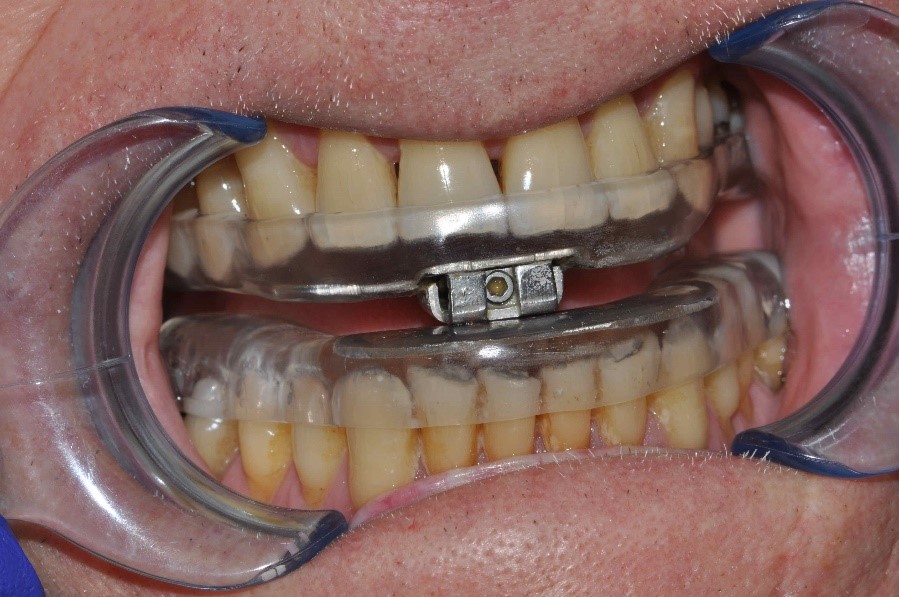Sleep apnoea…what’s it all about?

Apnoea or apnea is Latin, meaning ‘breathless’ or wanting to breathe. It is a sleep disorder that affects 34% of Australians.
During sleep apnoea, airflow to the lungs stops from ten seconds up to a few minutes at a time. This can happen 30 times an hour or hundreds of times a night which can put a huge strain on the heart and quality of life. Left untreated, sleep apnoea can lead to high blood pressure and even heart failure.
So why is sleep so important?
Good sleep is critical to our mental and physical health. If we don’t get enough quality sleep our brain function is dramatically reduced and our health restoration is compromised. During sleep, hormones from the brain flood into the body to help grow, repair and heal tissues. Small proteins called, cytokines, are released from the immune system to fight inflammation, infection and trauma.
Common symptoms of sleep apnoea
- Constant waking or restlessness
- Loud snoring or choking, snorting and gasping
- Constant tiredness, fatigue or exhaustion
- Often wanting to get up and go to the toilet
- Acid reflux
- Sore, dry throat on waking
- Morning headaches
- Poor concentration, and slower reaction times
- Falling asleep during the day
- Forgetfulness, memory loss, amnesia
- Depression
- Decreased sex drive or impotence in men
Common types of sleep apnoea
Obstructive Sleep Apnoea (OSA)
The most common form of Sleep Apnoea. This is when the muscles of the soft palate in the back of your mouth relax or collapse the airway, obstructing air flow to the lungs. This causes a decrease in oxygen levels in the blood (hypoxia), elevates blood pressure (hypertension), increases stress on the heart. OSA is a major contributor to high blood pressure and cardiovascular disease.
Central Sleep Apnoea (CSA)
CSA occurs when the airway is open but the brain stops sending signals to the diaphragm to make the effort to breathe. CSA is a serious condition that cause damaging effects on the heart and is commonly seen in those with heart failure.
Mixed Sleep Apnoea
This is a mixture of both OSA and CSA.
Common causes of sleep apnoea;
- Excess weight greatly increases the risk as fat deposits can close off the airway during sleep.
- Neck circumference; thick necks may have a narrow airway.
- Obstruction in the nasal passageways or nasal congestion due to swollen adenoids or tonsils, especially in children.
- Getting older; muscle tone decreases and the throat becomes narrower.
- Smoking increases throat inflammation and fluid retention in the upper airway.
- Using alcohol, sedatives or tranquilisers relaxes the muscles in the throat.
- Pain control, in particular opioids like codeine, morphine etc., can cause breathing suppression and add to respiratory difficulties.
- Antihistamines such as Benadryl for colds and allergies can cause drowsiness.
- Sleeping on your back results in your tongue dropping to the back of the mouth.
Diagnosis
Proper diagnosis is an essential first step in getting help and treatment. It is a complex issue so seeing your doctor first is important. A sleep test by a sleep specialist is the only way to determine the severity of the sleep apnoea. Testing can be done at home or in a sleep facility. Special sensors are placed on your body to record your brain activity, heartbeat and body movements while you sleep. Treatment options depend on these sleep study results.
Treatment options
- CPAP- Continuous Positive Airway Pressure consists of a quiet air flow generator that pumps air into a mask that delivers a constant airflow into the lungs. A selective pressure is set to continuously flow while you sleep keeping the path of oxygen to the lungs open. Depending on your level of health cover, TUH will pay up to 85% of CPAP costs up to an annual limit, claimable every 3 years.
- Anti-snoring devices bring the jaw forward, lifting the soft palate or holding the tongue forward. There are many different types of dental appliances that look similar to mouth guards and are made of resin-like material. A specially trained dentist will select what appliance best suits you, take impressions of your mouth send them to a dental lab for the dental appliance to be made. Fitting may take several visits for the appliance to become comfortable and effective to wear. Anti-snoring devices carry up to a $300 limit on Comprehensive Extras and Easy Choice covers.
- Surgery. In some instances, surgery can be an option if other treatments are not tolerated or not effective. Surgery is based on a person’s individual anatomy and specific problem, such as a deviated septum, polyps in the nose or enlarged tonsils and adenoids, especially in children. It can be an option for advancing the tongue forward to prevent blocking the airway. It is important to discuss risks and benefits with your doctor or specialist when it comes to possible surgery.Sleep Apnoea is a serious condition and a chronic form of sleep deprivation that can affect any of us during our life. Treatment options continue to improve especially with common airflow delivery systems. These devices are constantly being updated to provide better, more comfortable air delivery and quieter units. This disorder can be successfully tackled with a little patience because getting back to life and having energy in the long run is worth it.Sources: https://www.averybiomedical.com/central-sleep-apnea-day/https://www.resmed.com/au/en/consumer/diagnosis-and-treatment/sleep-apnea/what-is-sleep-apnea-and-what-are-the-symptoms.html http://healthysleep.med.harvard.edu/sleep-apnea/living-with-osa/persona-societal https://www.ressleep.com.au/sleep-apnea/
Compiled by: Vivienne Bidaud, Dental Hygienist
